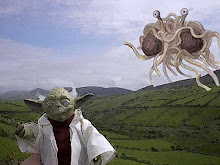Imagine that this is your plate of lobster... Looks good, doesn't it?

You will notice the claws of your lobster have been banded. These should be removed before the lobster is eaten, but not before the live lobster is steamed. The bands are placed on the lobster for two reasons: The first is to protect whoever handles the lobster from the powerful claws. The second is to protect the lobster from other lobsters.
Lobsters are carnivorous and will eat anything that crosses their paths, including another lobster. If the bands were not in place, the lobsters would eat each other while in pounds or holding tanks. One might say that shows that even lobsters think lobster meat is delicious.
Penobscot Bay lobster fishing might still be doing o.k. but a little farther south things are not so great. Nearly 12 million pounds of lobsters were taken out of Long Island Sound each year up to the late 1990s. The catch, though, has dwindled to between 2 million and 3 million pounds annually.
The water of the sound has warmed slightly the last few years but the change is just a little over one degree Fahrenheit. Although some warmer water species seem to be showing population increases in the sound no one is sure that the lobster decline is temperature driven.
Whatever the cause, an increasing number of lobsters are being imported from Canada to supply U.S. demand. In fact, even in New England, a sizeable portion of the lobster served in restaurants is not of U.S. origin.
Now there is another issue rearing its ugly head to confound the lobster gourmet.
Maine and New Hampshire officials are advising consumers not to eat lobster tomalley after tests have shown high levels of toxins in some lobsters.
The Maine Center for Disease Control said Friday that lobster meat is perfectly safe but that people should not eat the tomalley, a soft green substance found in the body of the lobster which is considered a delicacy by some...
High levels of toxic algae known as red tide have been recorded along Maine's coast this summer, forcing the state to close many areas to clam and mussel harvesting.
Tomalley functions as the lobster's liver by serving as a natural filter for contaminants that are in the water, unfortunately the contaminants become concentrated in the tomalley tissue.
People that eat oysters or other shellfish containing red tide toxins may become seriously ill with neurotoxic shellfish poisoning (NSP). Once a red tide appears to be over, toxins can remain in the shellfish for weeks to months.
The U.S. Food and Drug Administration has advised consumers for some years not to eat tomalley. Now some of the states where the lobsters are caught are joining in with FDA...






